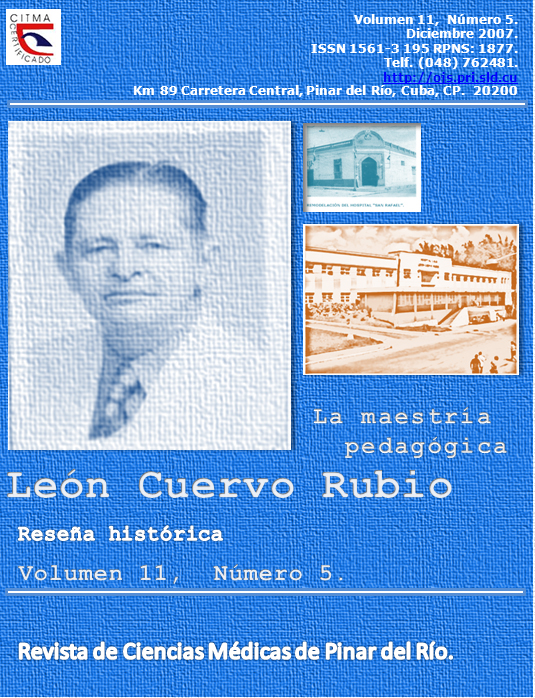Comprehensive Assessment on the State exam of Comprehensive Dental Care Residency. 2005-2006
Abstract
The state exam is an evaluation which documents the accomplishing of the general and essential content objectives, considering that it is applied at the end of the second year of the specialty of Comprehensive Dental Care, after having passed all the modules comprised in the residency syllabus when the academic year (2005-2006) ended. A descriptive and retrospective research was performed with 134 state exams applied to the residents in Comprehensive Dental Care belonging to the Medical School in Pinar del Río, whose main objective was to carry out a comprehensive assessment of the evaluative tool. All the exams were reviewed and the data collected underwent the percentage analysis of relative frequency, finding that the students had the best qualifications in the practical exam in the interval of 80-89 and 90-95, whereas, in the written state exams, most residents had qualifications ranging 70-79. When analyzing the greatest difficulties in the questions of the exam we found that the greatest number of mistakes lied in questions on growth and progress of and assistance for 19-year-old minors, with no questions of promotion, health education, and prevention modules, nor in the assistance for the disabled, in spite of that content being very important to accomplish the final objectives, and therefore the graduate's, the real comprehensive dental care specialist's profile that our National Health Systems demands.Downloads
How to Cite
Issue
Section
License
Authors who have publications with this journal agree to the following terms: Authors will retain their copyrights and grant the journal the right of first publication of their work, which will be publication of their work, which will be simultaneously subject to the Creative Commons Attribution License (CC-BY-NC 4.0) that allows third parties to share the work as long as its author and first publication in this journal are indicated.
Authors may adopt other non-exclusive license agreements for distribution of the published version of the work (e.g.: deposit it in an institutional telematic archive or publish it in a volume). Likewise, and according to the recommendations of the Medical Sciences Editorial (ECIMED), authors must declare in each article their contribution according to the CRediT taxonomy (contributor roles). This taxonomy includes 14 roles, which can be used to represent the tasks typically performed by contributors in scientific academic production. It should be consulted in monograph) whenever initial publication in this journal is indicated. Authors are allowed and encouraged to disseminate their work through the Internet (e.g., in institutional telematic archives or on their web page) before and during the submission process, which may produce interesting exchanges and increase citations of the published work. (See The effect of open access). https://casrai.org/credit/



